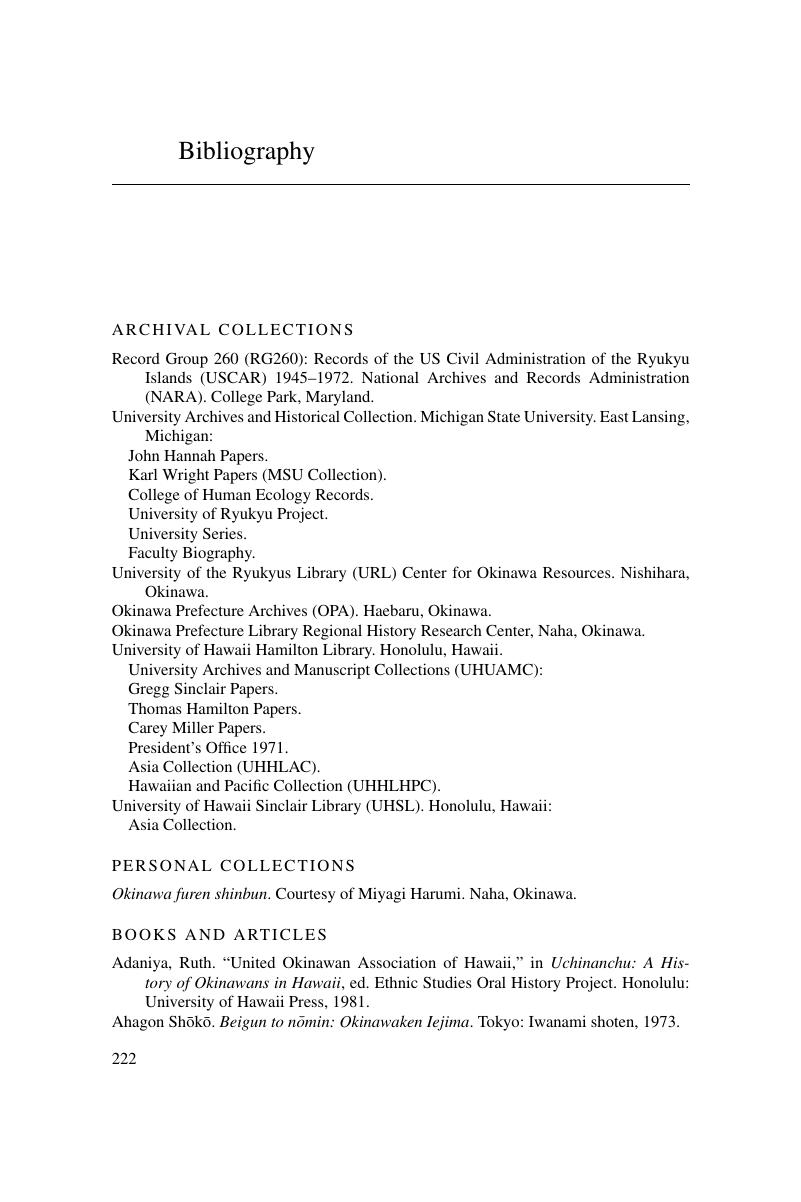 Cold War Encounters in US-Occupied Okinawa
Cold War Encounters in US-Occupied Okinawa Book contents
- Cold War Encounters in US-Occupied Okinawa
- Cold War Encounters in US-Occupied Okinawa
- Copyright page
- Contents
- Book part
- Note on Japanese names
- Illustrations
- 1 Re-thinking gender and militarism in Cold War Okinawa
- 2 Cultivating feminine affinity and affiliation with Americans: Cold War people-to-people encounters and women's club activities
- 3 “The world is our campus”: domestic science and Cold War transnationalism between Michigan and Okinawa
- 4 Building a bridge across the Pacific: domestic training and Cold War technical interchange between Okinawa and Hawaii
- 5 Mobilizing homes, empowering women: Okinawan home economists and Cold War domestic education
- 6 Cultivating feminine affinity and affiliation with the homeland: grassroots women's exchange between Mainland Japan and Okinawa
- Epilogue
- Bibliography
- Index
- References
Bibliography
Published online by Cambridge University Press: 05 July 2015
- Cold War Encounters in US-Occupied Okinawa
- Cold War Encounters in US-Occupied Okinawa
- Copyright page
- Contents
- Book part
- Note on Japanese names
- Illustrations
- 1 Re-thinking gender and militarism in Cold War Okinawa
- 2 Cultivating feminine affinity and affiliation with Americans: Cold War people-to-people encounters and women's club activities
- 3 “The world is our campus”: domestic science and Cold War transnationalism between Michigan and Okinawa
- 4 Building a bridge across the Pacific: domestic training and Cold War technical interchange between Okinawa and Hawaii
- 5 Mobilizing homes, empowering women: Okinawan home economists and Cold War domestic education
- 6 Cultivating feminine affinity and affiliation with the homeland: grassroots women's exchange between Mainland Japan and Okinawa
- Epilogue
- Bibliography
- Index
- References
Summary

- Type
- Chapter
- Information
- Cold War Encounters in US-Occupied OkinawaWomen, Militarized Domesticity and Transnationalism in East Asia, pp. 222 - 230Publisher: Cambridge University PressPrint publication year: 2015
